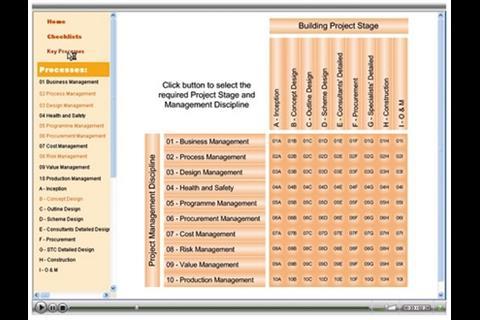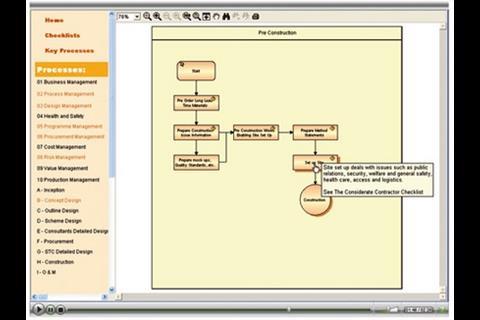Reading University’s Colin Gray explains how construction best practice can be downloaded as easily as music
The construction industry spends a lot of energy trying to improve best practice. Seminal reports have been written and there has been huge investment in research. And these efforts have resulted in improvements in management, health and safety, quality and awareness of environmental issues.
But getting this information to users at the sharp end still proves difficult. IT has not been fully exploited. Companies are investing in intranets, but access to these is restricted and the data is rarely up to date. Training is also a hit-and-miss affair. Those who attend training courses return to work with others who may not be as advanced, so performance stays at the lowest level of knowledge.
It is time to think differently and take advantage of new technologies. Downloadable music is now ubiquitous, so why not make best practice available to download on to laptop computers, personal digital assistants and mobile phones? Information providers should do for construction practitioners what music providers have for consumers.
A new web-based tool, the “i-wasp” – it stands for Integrated Work and Sequence Protocol – delivers best practice construction management guidance to computers or portable devices. The information is based on research into current practice and is kept up to date through discussion with practitioners.
There is information on a variety of categories: strategic direction, technical details, practice and legislation.
Users can access topics, including design management, health and safety, operation and maintenance, from a menu or through a matrix organised according to project stages and management disciplines. The user clicks on the intersection between the stage and discipline and is presented with a process map, for example one showing the pre-construction phase. They can click on further boxes to delve deeper. Clicking on the “set up site” box leads to a description of what this stage involves, including security, healthcare and logistics.
While the advice is quite prescriptive, it is also widely applicable and can be customised. It directs users to third-party sources of best practice information, such as the Considerate Contractor Checklist, which assures them of the reliability of what they are reading and gives them background information.
The advantage of the process map is that the user is given a clear and whole picture of all the tasks that have to be completed and can then source practical “how to” guidance and information as needed.
Rather than simply relying on instructions, users may wish to develop their own skills. Specific training can be obtained by downloadable educational modules.
Professor Colin Gray is Reading University’s academic director of the Health and Care Infrastructure Research and Innovation Centre, a joint research centre funded by EPSRC
What do users think?
Various organisations have evaluated i-wasp, writes Thomas Lane. Tony Sheehan, knowledge manager at Arup, describes it as “promising”. He says getting the right information to people at the right time is always a challenge on projects. “This is the first time anyone has attempted to deliver this information in a structured way.”
Nick Gibb, pre-construction director at Willmott Dixon, sees i-wasp primarily as a collaboration tool, because it gives a complete overview of a project and different disciplines can see how others are affected at different stages. “It’s very good at explaining where you are on a project, what’s coming up next and the gateway issues.”
Multiplex is also considering whether to use the product. Bob Arnold, the company’s UK safety director for quality and environment, says he is impressed so far. He says: “Because you can drill down to different levels, you aren’t flooded with information.” He adds that it would be a great tool for training and inducting new people as it would clearly show them the right way to do things.
Postscript
Find more best practice on our new health and safety pages at www.building.co.uk/healthandsafety



























No comments yet